The implementation and operation of radar systems involves high-power microwave, advanced high-speed signal and data processing techniques.
Range or distance measurement with radar is possible due to the characteristics of the electromagnetic energy emitted.
1. Electromagnetic waves are reflected when they encounter an electrically leading surface. In the event that these waves touch any target, the opposite object is identified.
2. Electromagnetic energy travels through the air at a constant speed (approximately the speed of light).
It can be expressed as
• 300,000 kilometers per second or
• 186,000 land miles per second or
• 162,000 nautical miles per second
This constant speed measures the operating time of the transmitted pulses, allowing the distance between reflective objects (planes, ships or cars) and the radar field to be determined.
3. This energy normally travels in a straight line through space. It changes little due to atmospheric weather and weather conditions. By using special radar antennas, this energy can be focused in the desired direction. Thus, the direction of the reflected objects can be measured.
These principles are mainly applicable to the radar system and allow determination of the distance, direction and height of the reflective object.
ADVANTAGES
Radar has many advantages over the visual observation interference. These are:
• Radar can operate at long ranges, day or night, in the light or in the dark.
• Radar can work in all weather conditions, fog and rain. It can even penetrate walls or layers of snow.
• Radar has a very wide coverage area, it is possible to observe the entire hemisphere.
• Radar detects and tracks moving objects. A high-resolution display is possible. That results in an object recognition.
• Radar can operate unmanned 24 hours a day, 7 days a week.
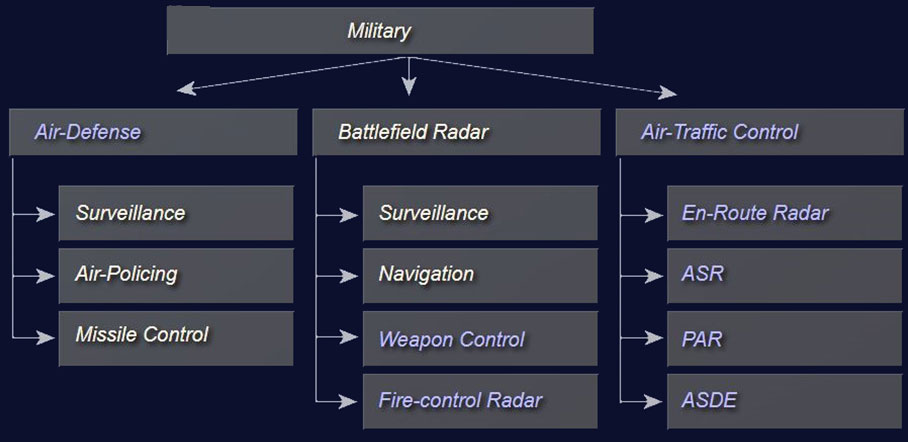
CLASSIFICATION OF RADAR SYSTEMS
Depending on different structures and working principles, radar devices are listed below and classified according to their intended use:
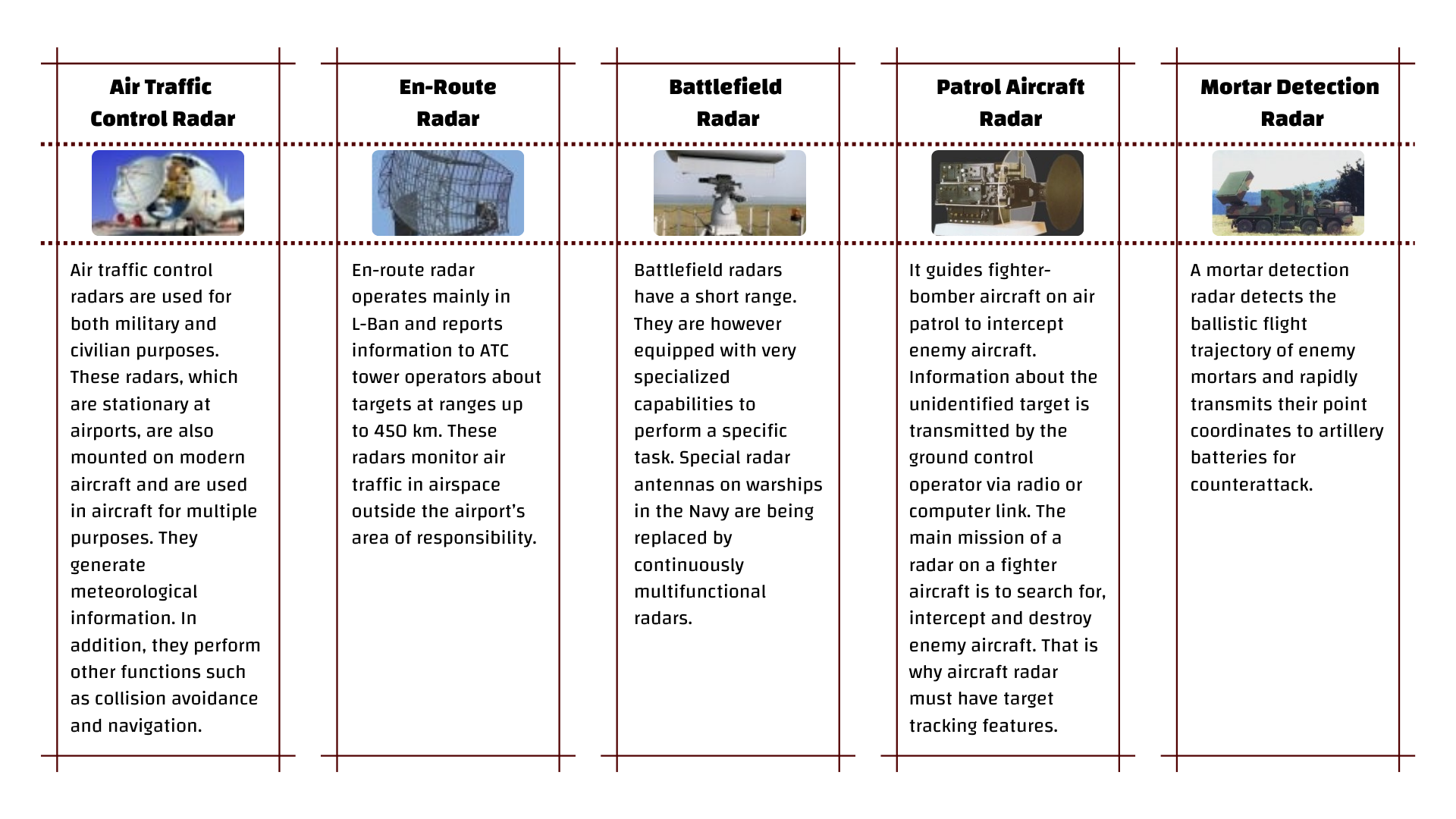
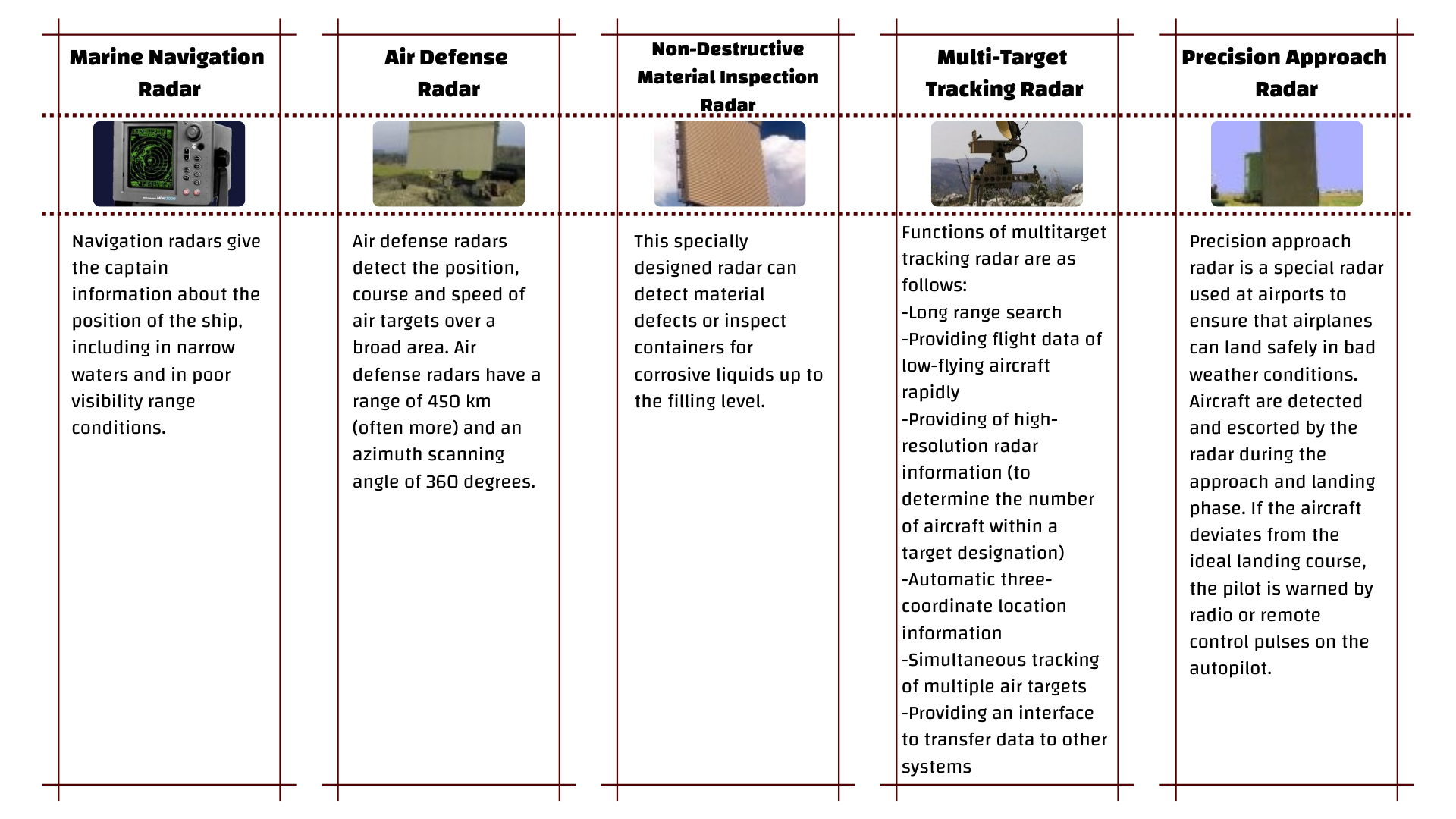
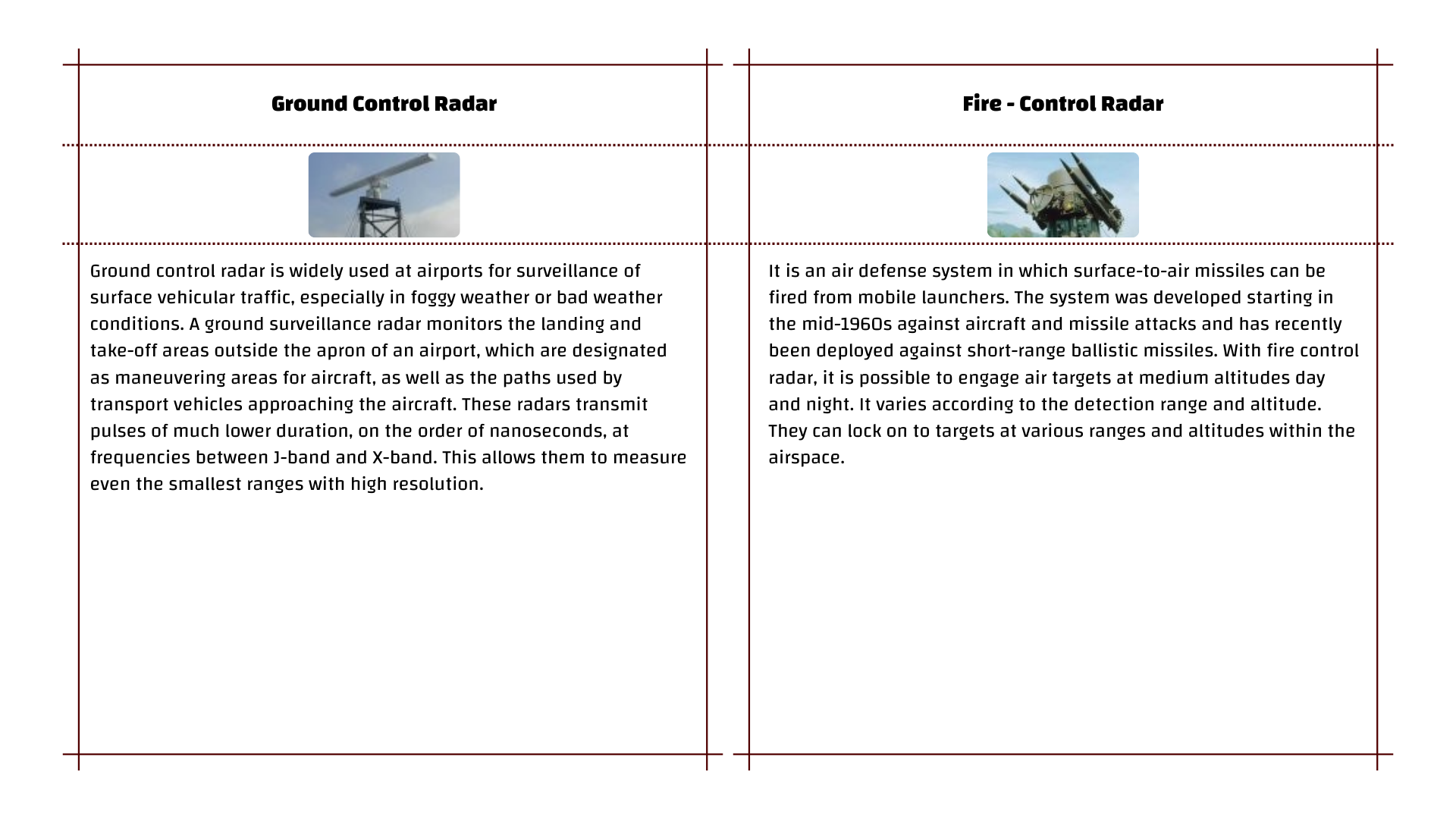
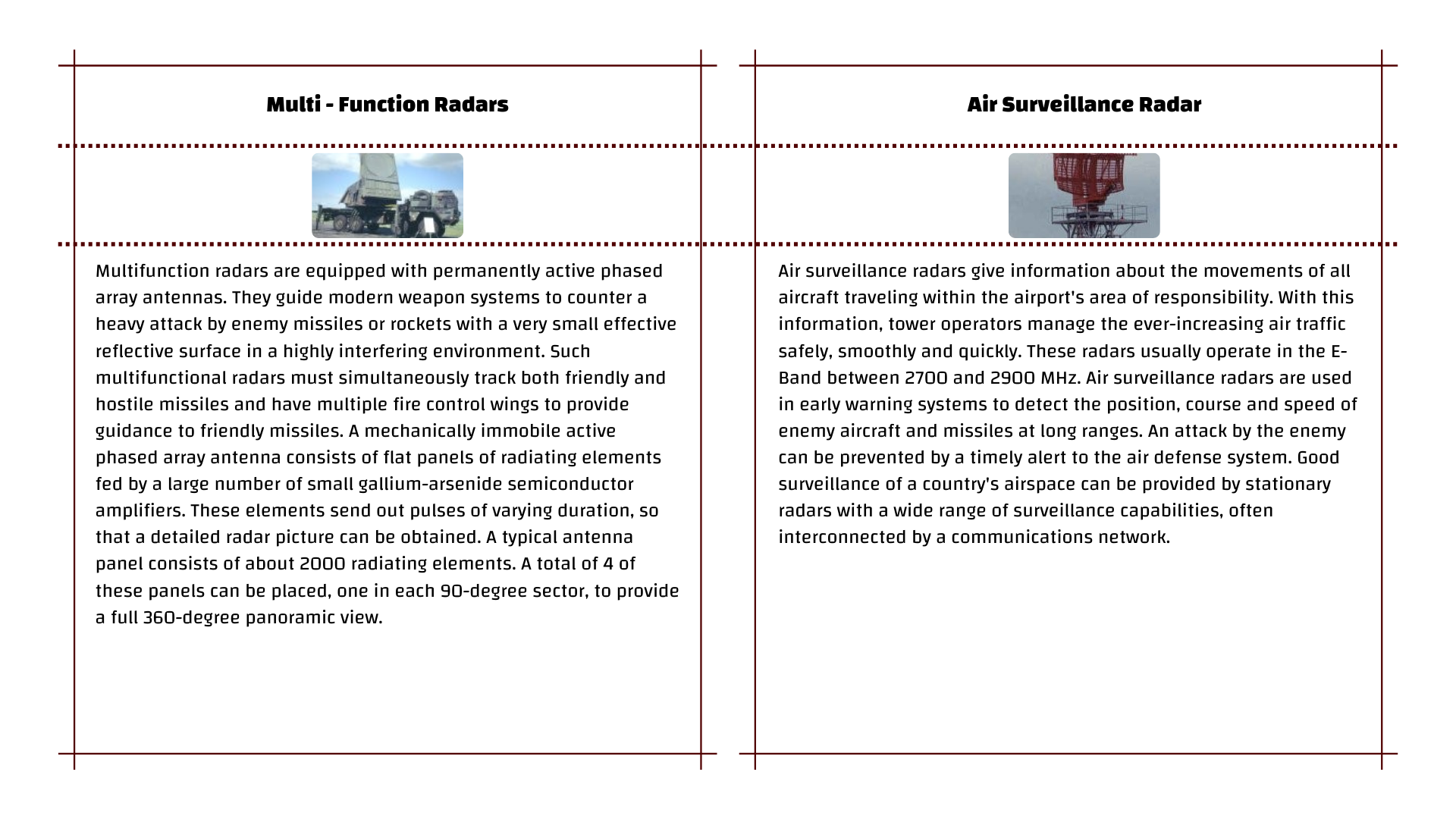
The antenna is usually the most conspicuous and largest part of a radar device.
• Symmetric (round) Parabolic Antennas
• Asymmetrical (elliptical or angular) Parabolic Antennas
• Long, Small, Vertically Positioned Parabolic Antennas
• Simple Twisted Parabolic Antennas
• Cheese Antennas
• Two Elongated Parabolic Antennas
• Round Shrouded Antennas
• Narrow Bundle Antennas
• Large Vertical Aperture Antennas
- Phased Array Antennas
- Small Radar Devices for Recreational Boats
- Radar Antennas with Yagi Antenna Groups
- Radiator Groups in Front of the Common Grid Reflective
- Airborne Nose Radar Devices
- Aircraft Mounted Search Radar Devices
- Radar Satellites
- Over-the-horizon Radars
- Experimental and Educational Radar Antennas

